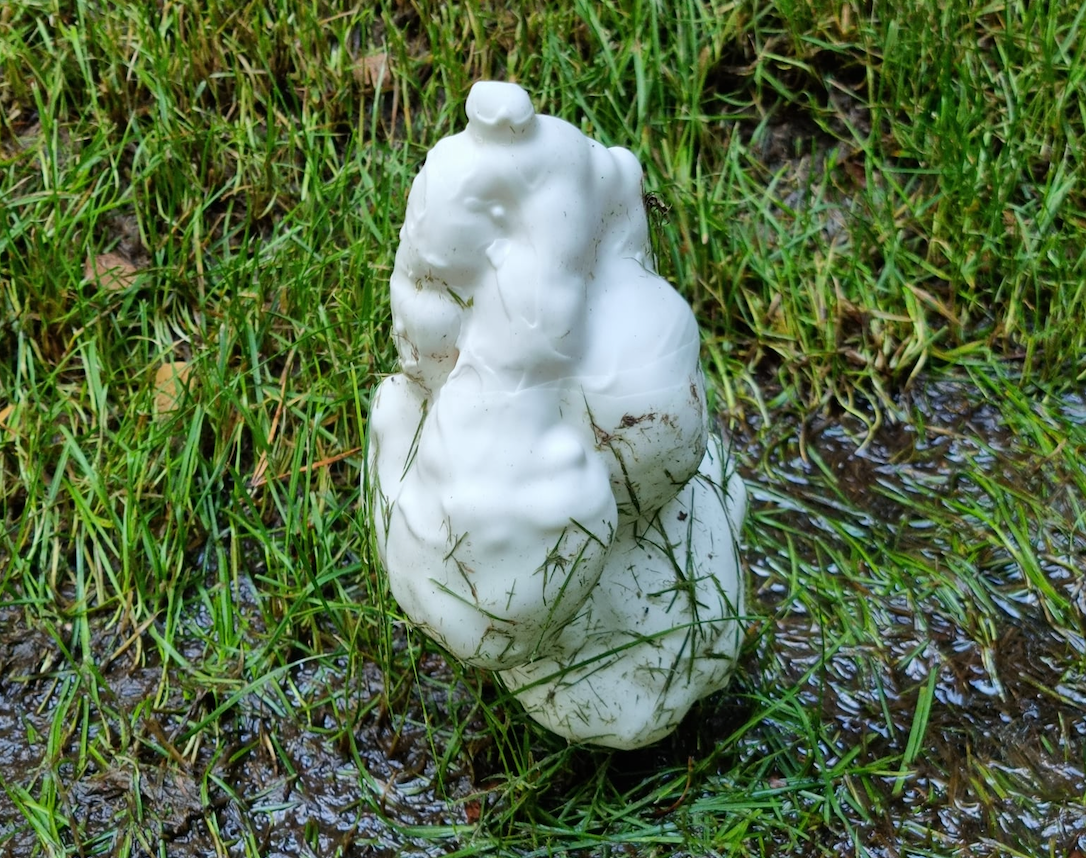Erotic Morality for Anthropocene Feminism
Pink, glossy, sexually appealing features of a female body in contemporary art represent rather ambiguous aesthetic options. The mainstream feminist critique tends to stigmatise such a representation of femininity considering it a path to the objectivation of a female body — harmless, desirable, and usually voiceless. However, similar to cuteness, the emphasis on eroticism reveals the ambivalent agency of the vulnerable. In Anna Moknova’s works, femininity manifests itself as a desirable yet uncanny and indeterminate characteristic negating the very idea of brutality and violence. What can be easily labelled as the aestheticisation of sexual objectivation in her case works in reverse. Mokhova uses neo-baroque aesthetics, gentle textures, sweet scents and pastel lighting as sensorial triggers transforming the erotic agency of her objects into a moral impulse that simultaneously invites care and displaces masculine authority.

As Linda Holler points out, “compared to vision, our other senses of hearing, smelling, tasting, and touching… bring us increasingly into actual physical contact with the world and therefore can serve to prevent forms of denial, solipsism, and idealism.”* Mokhova’s fragmented female bodies, flower petals with the pattern of women’s palms, reptile-shaped constructions composed of sculptures resembling wrists are simultaneously attractive and disturbing. Her narratives, textures, scents, colours and lights appeal to both sensory and emotional feelings, essential for an ethical response. Instead of being just about sweet and powerless, Mokhova’s objects, familiar and unfamiliar at once, invite psychic and physical touch, challenge conscious and unconscious boundaries of femininity, in particular, the conventional perception of vulnerability. To that purpose, the artist uses organic materials such as wax, plants, minerals, soap, glass together with silicon — with these fragile and warm materials she celebrates the curative power of tenderness, mildness, and subtlety.
Her ability to create the artefacts of erotic morality gives audiences new perspectives on various issues. Working with Mokhova within the framework of several group exhibitions I realised that her narratives and aesthetics can turn every discussion towards the ethics of care. Be it technological innovations, environmental interventions or geopolitical violence, through arousing sensual awareness her commentary on the topic always addresses nature and its creatures as a corporeal identity emanating empathy, compassion, and care.
Whatever we call sensual awareness, coming from non-sense to sense is a moral and political act because it restores our ties to the material world and to the consequences of our actions. Tactile forms of consciousness are forms of embodied wisdom that help us remain in touch with the extended network of our biological and economic lives.*
Even her use of materials challenges the concept of the artist’s authorship. Changing its states the matter Mokhova works with shapes itself, in this process the artist steps down to the position of a co-creator, allowing the matter to speak for the self. Ecofeminism has a long liberatory history, unfolding around the acknowledgement of parallels between the oppression of women and the exploitation of nature. Appealing to natural creativity as a way of making the sense of the world, Mokhova provides important examples of “the self-world intimacy”* as an alternative perceptual optic. In pursuing this approach, she explores the fusion of erotic and political agency, which makes her aesthetics an important trope for the future development of Anthropocene feminism.

*Linda Holler. Erotic Morality: The Role of Touch in Moral Agency. London, Rutgers University Press, 2002.
